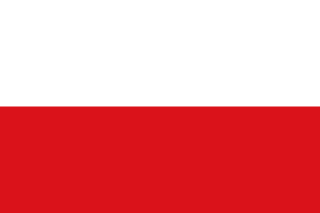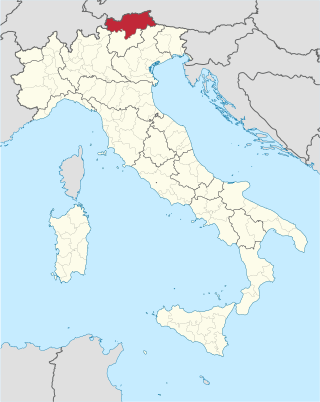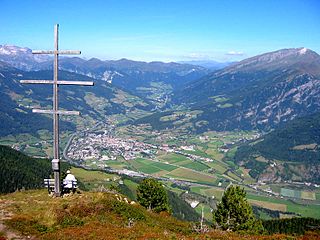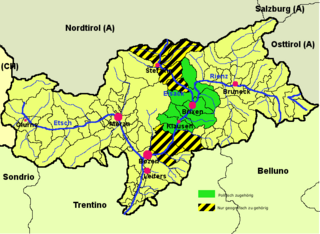
Tyrol is an Austrian federal state. It comprises the Austrian part of the historical Princely County of Tyrol. It is a constituent part of the present-day Euroregion Tyrol–South Tyrol–Trentino. The capital of Tyrol is Innsbruck.

South Tyrol is an autonomous province in northern Italy. An English translation of the official German and Italian names could be the Autonomous Province of Bolzano – South Tyrol, reflecting the multilingualism and different naming conventions in the area. Together with Trentino, South Tyrol forms the autonomous region of Trentino-Alto Adige/Südtirol. The province is the northernmost of Italy, the second largest with an area of 7,400 square kilometres (2,857 sq mi), and has a total population of about 534,000 inhabitants as of 2021. Its capital and largest city is Bolzano.

Brixen is a town and commune in South Tyrol, northern Italy, located about 40 kilometres (25 mi) north of Bolzano.

The Wipp Valley is an Alpine valley in Tyrol, Austria and in South Tyrol, Italy, running between Innsbruck and Franzensfeste. The Brenner Pass at the Austro-Italian border divides it into the northern, Austrian Lower Wipp Valley and the southern, Italian Upper Wipp Valley. The Lower Wipp Valley extends along the Sill River southward from Innsbruck, where the Sill meets the larger Inn River, up to the Brenner Pass. South of the border, the Upper Wipp Valley stretches along the Eisack River by way of Sterzing to Franzensfeste. It forms the Wipptal District of the province of South Tyrol.

The Puster Valley is one of the largest longitudinal valleys in the Alps that runs in an east-west direction between Lienz in East Tyrol, Austria, and Mühlbach near Brixen in South Tyrol, Italy. The South Tyrolean municipalities of the Puster Valley constitute the Puster Valley district.

Freienfeld is a comune (municipality) and a village in the province of South Tyrol in northern Italy, located about 45 kilometres (28 mi) north of the city of Bolzano.

Eisack Valley is a district in South Tyrol, Italy. It comprises the middle part of the valley of the Eisack, from Franzensfeste in the north to Waidbruck in the south.

Nauders is a municipality in the district of Landeck in the Austrian state of Tyrol.

Gries am Brenner, often referred to as simply Gries, is a municipality in the Wipptal in the southern district of Innsbruck-Land. The village consists of several hamlets.

Steinach am Brenner is a market town in the district of Innsbruck-Land in the Austrian state of Tyrol located south of Innsbruck in the Wipptal at the Sill River.

The Eisack is a river in Northern Italy, the second largest river in South Tyrol. Its source is near the Brenner Pass, at an altitude of about 1990 m above sea level. The river draws water from an area of about 4,200 km2. After about 96 km, it joins the Adige river south of Bolzano. At first the river flows through the Wipptal and after the village of Vahrn through the Eisacktal. Its source is sung of in the Bozner Bergsteigerlied as the northern frontier of the South Tyrolean homeland.

Innsbruck Hauptbahnhof is the main railway station in Innsbruck, the capital city of the Austrian federal state of Tyrol. Opened in 1853, the station is a major hub for western and central Austria. In 2019, it was the 8th-busiest station in the country, and the 2nd-busiest outside of Vienna after only Linz Hauptbahnhof, with 315 train movements and 38,500 passengers daily.

The Brenner Railway is a major line connecting the Austrian and Italian railways from Innsbruck to Verona, climbing up the Wipptal, passing over the Brenner Pass, descending down the Eisacktal to Bolzano/Bozen, then further down the Adige Valley to Rovereto/Rofreit, and along the section of the Adige Valley, called in Italian the "Vallagarina", to Verona. This railway line is part of the Line 1 of Trans-European Transport Networks (TEN-T). It is considered a "fundamental" line by the state railways Ferrovie dello Stato (FS).
Franzensfeste Fortress is a fortress situated in the village of Franzensfeste, in South Tyrol, Italy.

Bolzano/Bozen railway station is the main station of Bolzano, capital of the autonomous province of South Tyrol, in northeastern Italy.

Brenner railway station is the border station of Italy and Austria. It serves the town and comune of Brenner in the autonomous province of South Tyrol, northeastern Italy.

Tyrol is a historical region in the Alps of Northern Italy and western Austria. The area was historically the core of the County of Tyrol, part of the Holy Roman Empire, Austrian Empire and Austria-Hungary, from its formation in the 12th century until 1919. In 1919, following World War I and the dissolution of Austria-Hungary, it was divided into two modern administrative parts through the Treaty of Saint-Germain-en-Laye:

The Drava Valley Railway is an east–west railway running along the Drava. It runs from Maribor to Innichen, where it merges into the Puster Valley Railway to Franzensfeste (Fortezza). It starts in northern Slovenia, crosses Carinthia and East Tyrol and ends in South Tyrol. The Klagenfurt–Bleiburg section has been rebuilt as part of the Koralm Railway, which follows the Jaun Valley Railway (Jauntalbahn) from Bleiburg. Like the rest of the line in Slovenia, this section of the line has one track and is unelectrified.

The Puster Valley Railway is a standard gauge, single-track railway line in the Puster Valley between Franzensfeste and Innichen, South Tyrol, Italy. The line branches off the Brenner Railway in Franzensfeste and runs via Bruneck and Toblach to Innichen, where it continues as the Drava Valley Railway (Drautalbahn).

Franzensfeste station is a railway station located on the Brenner Railway and the western terminus of the Puster Valley Railway. It serves the town of Franzensfeste (Fortezza).




























